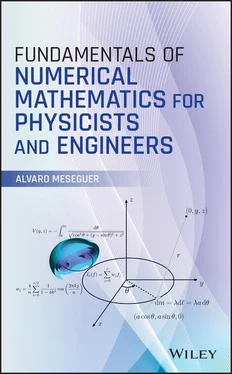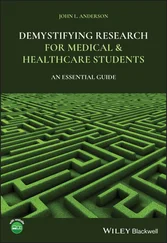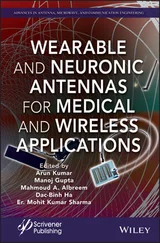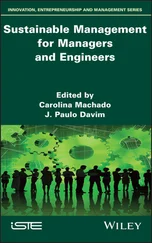Alvaro Meseguer - Fundamentals of Numerical Mathematics for Physicists and Engineers
Здесь есть возможность читать онлайн «Alvaro Meseguer - Fundamentals of Numerical Mathematics for Physicists and Engineers» — ознакомительный отрывок электронной книги совершенно бесплатно, а после прочтения отрывка купить полную версию. В некоторых случаях можно слушать аудио, скачать через торрент в формате fb2 и присутствует краткое содержание. Жанр: unrecognised, на английском языке. Описание произведения, (предисловие) а так же отзывы посетителей доступны на портале библиотеки ЛибКат.
- Название:Fundamentals of Numerical Mathematics for Physicists and Engineers
- Автор:
- Жанр:
- Год:неизвестен
- ISBN:нет данных
- Рейтинг книги:5 / 5. Голосов: 1
-
Избранное:Добавить в избранное
- Отзывы:
-
Ваша оценка:
Fundamentals of Numerical Mathematics for Physicists and Engineers: краткое содержание, описание и аннотация
Предлагаем к чтению аннотацию, описание, краткое содержание или предисловие (зависит от того, что написал сам автор книги «Fundamentals of Numerical Mathematics for Physicists and Engineers»). Если вы не нашли необходимую информацию о книге — напишите в комментариях, мы постараемся отыскать её.
Fundamentals of Numerical Mathematics for Physicists and
Engineers
Provides a modern perspective of numerical mathematics by introducing top-notch techniques currently used by numerical analysts Contains two parts, each of which has been designed as a one-semester course Includes computational practicals in Matlab (with solutions) at the end of each section for the instructor to monitor the student's progress through potential exams or short projects Contains problem and exercise sets (also with solutions) at the end of each section is an excellent book for advanced undergraduate or graduate students in physics, mathematics, or engineering. It will also benefit students in other scientific fields in which numerical methods may be required such as chemistry or biology.

 such that
such that  , compute
, compute  and set
and set
 from
from  is an example of what is generally termed as algorithm , 5 i.e. a set of mathematical calculations that sometimes involves decision‐making. Since this algorithm must be repeated or iterated , the bisection method described above constitutes an example of what is also termed as an iterative algorithm .
is an example of what is generally termed as algorithm , 5 i.e. a set of mathematical calculations that sometimes involves decision‐making. Since this algorithm must be repeated or iterated , the bisection method described above constitutes an example of what is also termed as an iterative algorithm . , the estimation of the root was
, the estimation of the root was  , which is the midpoint of the interval
, which is the midpoint of the interval  , whereas for
, whereas for  we obtain a narrower region
we obtain a narrower region  of existence of such root, as well as its corresponding improved estimation
of existence of such root, as well as its corresponding improved estimation  . In other words, for
. In other words, for  the root lies within
the root lies within  , with a tolerance
, with a tolerance  , whereas for
, whereas for  the interval containing the root is
the interval containing the root is  , with
, with  . Overall, after
. Overall, after  bisections, the tolerance is
bisections, the tolerance is  , becoming halved in the next iteration.
, becoming halved in the next iteration. . Expression ( 1.3) is mathematically elegant, but not very practical if one needs an estimation of its numerical value. For
. Expression ( 1.3) is mathematically elegant, but not very practical if one needs an estimation of its numerical value. For  we already have that estimation nearly within a
we already have that estimation nearly within a  or relative error. The reader may keep iterating further to provide better approximations
or relative error. The reader may keep iterating further to provide better approximations  of
of  , overall obtaining the sequence
, overall obtaining the sequence  . A natural question is whether this sequence has a limit. This leads to the mathematical concept of convergence of a sequence:
. A natural question is whether this sequence has a limit. This leads to the mathematical concept of convergence of a sequence: is said to be convergent to
is said to be convergent to  if
if  or, equivalently, if
or, equivalently, if  , where
, where  .
. appearing in the previous definition is called the error associated with
appearing in the previous definition is called the error associated with  . However, since
. However, since  may be positive or negative and we are just interested in the absolute discrepancy between
may be positive or negative and we are just interested in the absolute discrepancy between  and the root
and the root  , it is common practice to define the absolute error
, it is common practice to define the absolute error  of the
of the  th iterate. Checking convergence numerically using the previous definition has two main drawbacks. The first one is that we do not know the value of
th iterate. Checking convergence numerically using the previous definition has two main drawbacks. The first one is that we do not know the value of  , which is precisely the goal of root‐finding. The second is that in practice we cannot perform an infinite number of iterations in order to compute the limit as
, which is precisely the goal of root‐finding. The second is that in practice we cannot perform an infinite number of iterations in order to compute the limit as  , and therefore we must substitute the convergence condition by a numerically feasible one. For example, looking at the sequence resulting from the bisection method, it is clear that the absolute difference of two consecutive elements decreases when increasing
, and therefore we must substitute the convergence condition by a numerically feasible one. For example, looking at the sequence resulting from the bisection method, it is clear that the absolute difference of two consecutive elements decreases when increasing  (for example,
(for example,  and
and  ). Since, by construction, the bisection sequence satisfies
). Since, by construction, the bisection sequence satisfies  , it is common practice to consider a sequence as converged when this difference becomes smaller than a prescribed threshold or tolerance
, it is common practice to consider a sequence as converged when this difference becomes smaller than a prescribed threshold or tolerance  :
:










